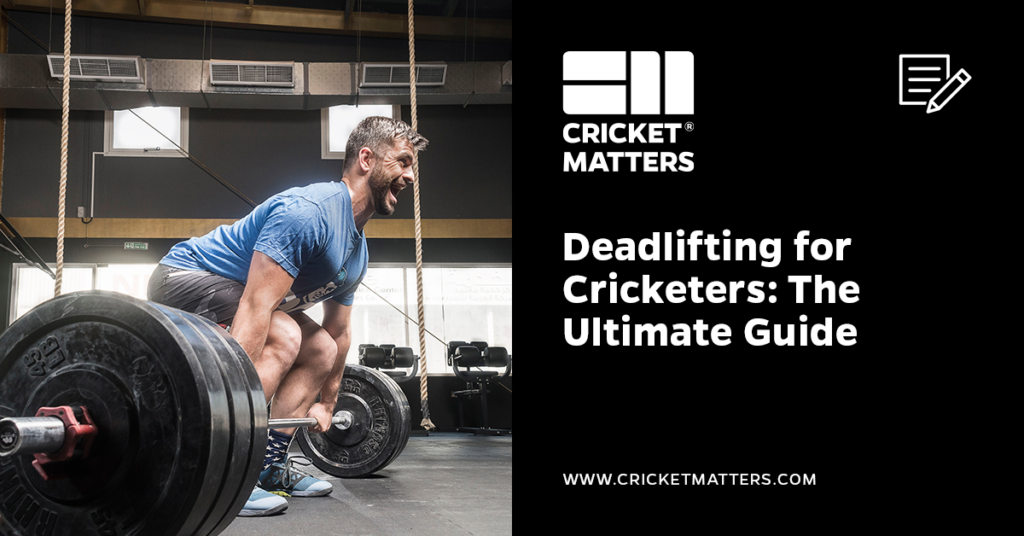
I hope you enjoy reading this blog post.
James Breese, Cricket Matters FounderIf you need my help with cricket coaching, strength and conditioning, injury rehab, or nutrition, click here.
Many cricketers may find themselves without access to gym facilities and have no equipment.
This shouldn’t deter you from following some kind of strength and conditioning programme.
Remember, doing something is always better than doing nothing.
That’s why I’m excited to introduce the “No Equipment Workout for Cricketers” — a dynamic, gym-free training programme tailored for cricketers who want to improve their athleticism at home without any equipment.
This workout is the same one we’ve recommended to our athletes who need to train on the go or at home with zero equipment.
By the end of this blog, you’ll see that no gym and no equipment is no barrier to becoming a stronger, more explosive cricketer.
Let’s dive in and unlock your potential with our ultimate no equipment workout for cricketers!
Table of Contents
Workout Overview
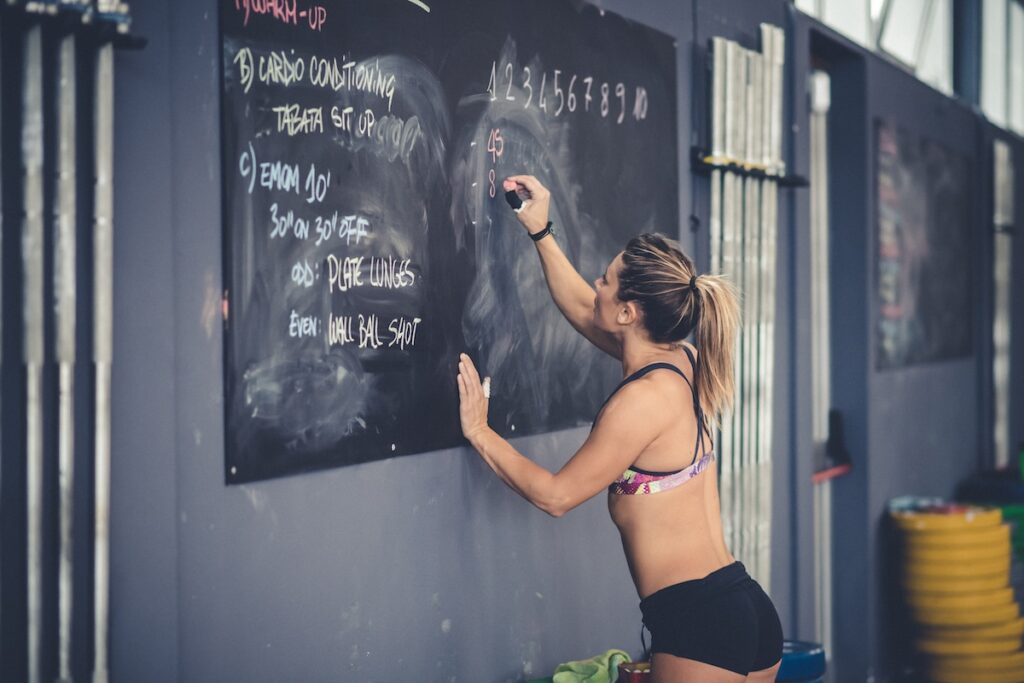
The Ultimate No Equipment Workout for Cricketers
For those who wish to see the whole workout or save it for future use so they can use in the future, I’ve created a quick table below.
For more detailed instructions on each exercise and how to perform it, please continue to read the whole article.
| Exercise | Sets | Reps | Rest | |
| Dynamic Warm Up | Resisted Rocking W/Neck Mobility, V Stance T-Spine Rotation, Lizard Lunge Overhead Hip Opener, Glute Bridge: 3 reps w/5 secs hard exhale as you bridge | 1 | 30 Seconds per Area | No Rest |
| Activation | Floor Slide W/Breathing, Dead Bugs, Shin Box | 1 | 3 – 5 Reps per exercise | No Rest |
| Power Work | Broad Jump | 3 | 5 | 2 – 5 Minutes |
| Heart Raisers | Mountain Climbers and High Knees | 3 | See Description | 2 – 3 Minutes |
| Strength Superset #1 | Stop and Pop and Side Plank Rotations | 3 | See Description | 60 Seconds |
| Strength Superset #2 | Airborne Lunge and Reverse Plank | 3 | See Description | 60 Seconds |
| Strength Superset #3 | Alternating Lunges and Press Ups | 3 | See Description | 60 Seconds |
| Conditioning | 22-Yard Tempo Runs | 1 | 8 – 10 Minutes | N/A |
| The Cool Down | Diaphragmatic Breathing, Quad Stretch, Piriformis Stretch | 1 | 2 Minutes Each Position | N/A |
The Warm-Up
Dynamic Warm-Up Exercises
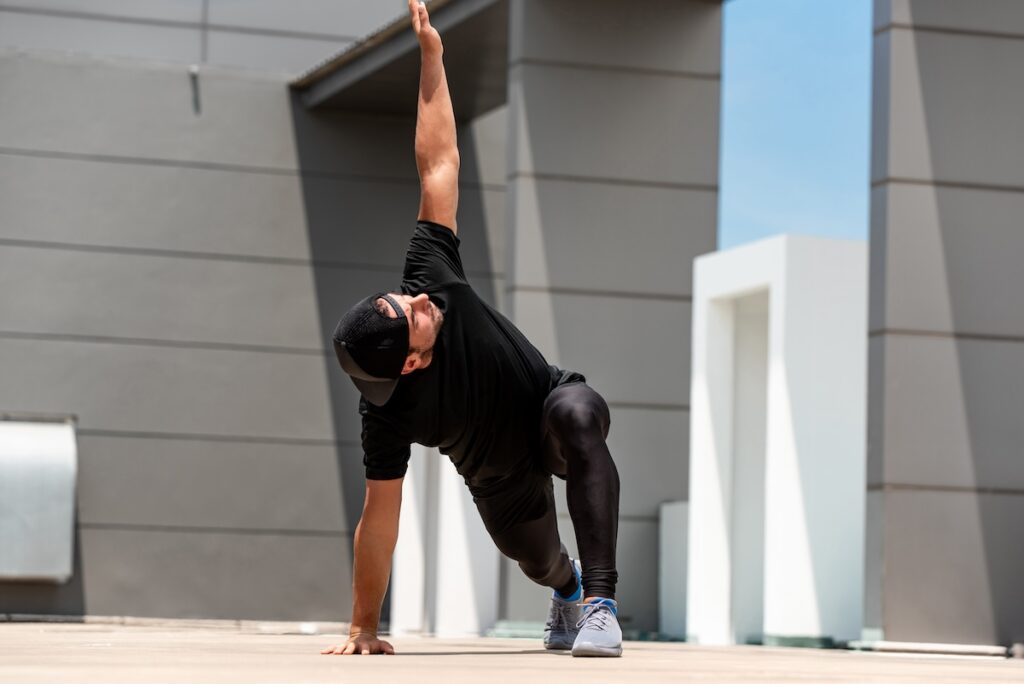
We always begin with dynamic warm-up exercises designed to prepare the body for physical activity by increasing heart rate, enhancing blood flow to muscles, and improving flexibility and joint mobility.
Each exercise should be performed for approximately 30 seconds to 1 minute before moving on to the next.
Resisted Rocking with Neck Mobility
This exercise involves gentle rocking back and forth on the hands and knees while incorporating neck movements to improve flexibility and mobility in the cervical spine.
It helps in loosening the neck, shoulders, and upper back.
V Stance T-Spine Rotation
Starting in a wide-legged stance, bend forward at the hips, placing one hand on the ground for support.
Extend the other arm towards the ceiling while rotating your thoracic spine (upper back).
This movement targets the rotational mobility of the T-spine, which is crucial for overhead activities and rotational sports.
Lizard Lunge Overhead Hip Opener
Begin in a lunge position with one foot forward and hands on the ground.
Lift the inside hand and reach it overhead towards the back, creating a deep stretch through the hip flexors and engaging the core.
This exercise is excellent for opening up the hips and enhancing hip mobility.
Glute Bridge with Breathing Focus
Lie on your back with your knees bent and feet flat on the ground.
Lift your hips towards the ceiling, forming a straight line from your knees to your shoulders.
Focus on deep breathing while holding the bridge position to help improve core stability and strengthen the lower back and glutes.
Activation Exercises
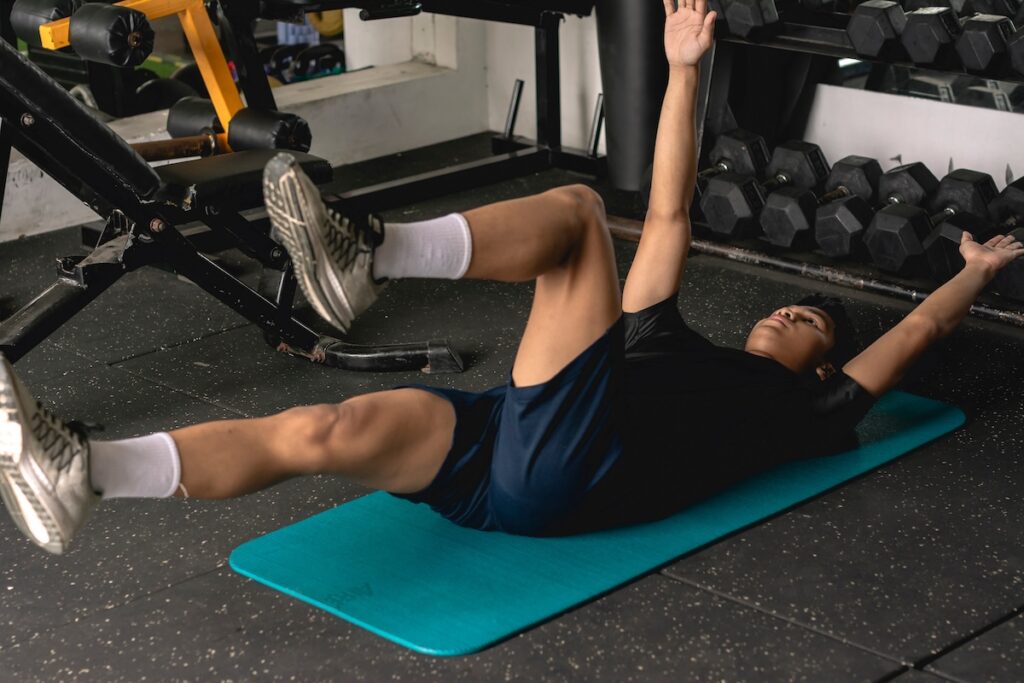
Activation exercises are critical for preparing the muscles for more strenuous activities.
How to Perform
Perform this routine once continuously, moving from one exercise to another without resting.
Focus on controlled movements and proper form throughout each exercise.
Floor Slide with Breathing
This exercise involves lying on your back with arms in a “W” position and sliding them up over your head while keeping them flat on the floor.
- Position: Lie on your back on a flat surface, knees bent, and feet flat on the ground. Place your arms in a “W” shape at your sides.
- Action: Slowly slide your arms above your head, keeping them flat on the floor.
- Breathing: Take 3 to 5 deep breaths. Inhale as you slide your arms up, and exhale as you return them to the starting position.
- Repetitions: Complete the arm slides synchronized with your breathing for 3 to 5 breath cycles.
Syncing these movements with controlled breathing helps activate the shoulder and upper back muscles and improves thoracic mobility.
Dead Bugs
Position: Lie flat on your back with your knees bent at 90 degrees, arms pointing towards the ceiling directly above your shoulders.
Action: Extend your right leg straight out, hovering just above the ground, while lowering your left arm behind your head.
Keep your lower back pressed firmly into the floor to maintain spinal alignment. Return to the starting position and switch sides, extending the left leg and right arm.
Repetitions: Perform three repetitions on each side, alternating smoothly.
The standard dead bugs exercise is a fundamental core-strengthening movement. It enhances stability and coordination by engaging your deep core muscles to stabilize your spine as you alternate limb movements.
This exercise effectively targets your abdominal muscles without equipment, making it a versatile addition to any workout routine.
Shin Box Get Up
Position: Sit on the floor with your legs bent at 90-degree angles, the left leg in front, and the right leg to the side.
Action: Engage your core and glutes to lift your hips off the ground, propelling your body upward into a kneeling position. Smoothly reverse the movement to return to the original sitting position. Switch the positioning of your legs and repeat the motion, alternating sides.
Repetitions: Perform three repetitions on each side, maintaining a smooth pace and controlled movements.
The Shin Box Get Up exercise targets the glutes and hip rotators without equipment.
Moving from a seated to a kneeling position helps to enhance hip mobility and stability.
It’s excellent for warming up the lower body and preparing it for more dynamic movements while strengthening the muscles around the hips and lower back.
Remember, the goal of the activation round is to engage and activate your muscles effectively, preparing them for more intense physical activity.
Keep the transitions smooth and maintain focus on your form and breathing.
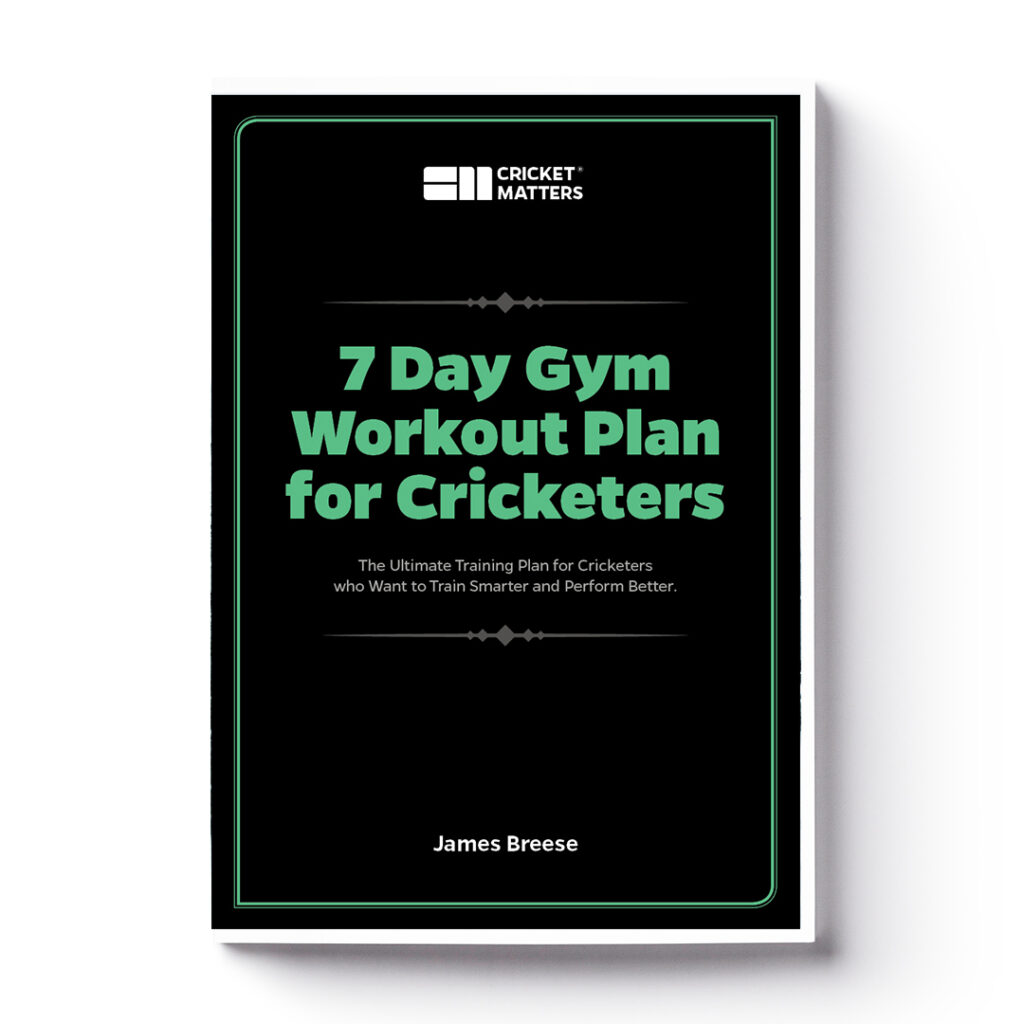
Have You Downloaded Our FREE 7-Day Gym Workout Plan?
Grab your complete step-by-step 7-day gym workout plan for cricketers today. There will be no more Guesswork. Just follow the plan and get results.
The Main Workout
Power Work
We put power work at the start of workouts after warm-up and activation exercises because muscles and the nervous system are freshest at this stage, allowing maximum explosive performance while reducing the risk of injury.
These exercises aim to increase your speed and strength, significantly improving your athletic ability as a cricketer.
1. Broad Jump
Purpose: The Broad Jump is a fundamental plyometric exercise designed to increase explosive power in the lower body. It is especially beneficial for improving horizontal leaping ability, acceleration, and overall athletic performance.
Instructions:
Setup:
- Position yourself on a flat, stable surface with ample space in front of you.
- Stand with your feet about shoulder-width apart.
Movement:
- Begin by lowering into a deep squat position, driving your hips back and keeping your chest up to maintain balance.
- Swing your arms backwards to create momentum.
- Explosively jump forward as far as possible, using your legs and arms to propel you.
- Land softly on both feet with your knees slightly bent to absorb the impact.
Tips:
- Ensure you maintain proper form by aligning your knees with your toes throughout the jump.
- Aim for a controlled and balanced landing to minimize stress on the joints.
- Practice a few warm-up jumps with less intensity to prepare your muscles.
Repetitions: Perform 3 sets of 5 repetitions, with adequate rest between sets to maintain the quality of each jump.
Benefits: The Broad Jump helps develop lower body strength and explosiveness, which are crucial for various sports and activities requiring quick power bursts.
This exercise enhances coordination and balance by requiring precise control during the landing phase.
Heart Raisers
2. Mountain Climbers
Mountain Climbers
Purpose: Mountain Climbers are a dynamic bodyweight exercise designed to enhance cardiovascular fitness, core stability, and agility.
This exercise is excellent for engaging multiple muscle groups simultaneously, making it a comprehensive workout for improving overall fitness.
Instructions:
Setup:
- Start in a plank position with your arms straight and hands placed directly under your shoulders.
- Your body should form a straight line from your head to your heels.
Movement:
- Drive your right knee towards your chest without lifting your hips or allowing your lower back to sag.
- Quickly switch legs, extending your right leg back to the starting plank position while driving your left knee towards your chest.
- Continue alternating legs rapidly, maintaining a steady and controlled pace.
Tips:
- Keep your core engaged throughout the exercise to stabilize your body and protect your lower back.
- Focus on maintaining a neutral spine and avoid bouncing your hips up and down as you switch legs.
- Breathe rhythmically to help maintain a steady pace and enhance endurance.
Repetitions: Perform 3 sets of 10 repetitions per leg, with a short rest between sets to maintain intensity and form.
Benefits:
Mountain Climbers are versatile exercises that improve cardiovascular endurance, core strength, and flexibility. They also increase metabolic rate, which can help burn calories and fat more efficiently.
This exercise is particularly beneficial for athletes looking to enhance their quickness and agility in sports that require rapid directional changes and speed.
3. High Knees
Purpose: High Knees are a vigorous cardiovascular exercise that enhances agility, speed, and endurance. This exercise effectively targets the lower body, particularly the quadriceps and calves, while engaging the core for stability.
Instructions:
Setup:
- Stand upright with your feet hip-width apart.
- Begin by jogging in place, lifting your knees as high as possible towards your chest.
- Use your arms to help drive your motion, alternating them with the opposite knee, similar to a natural running motion.
- Maintain a quick and controlled pace, ensuring each foot lands softly to minimize impact.
Tips:
- Keep your back straight and your core engaged throughout the exercise to help maintain balance and prevent strain on your lower back.
- Focus on lifting your knees to at least hip height to maximize the workout’s effectiveness.
- Aim to maintain a consistent high pace throughout each interval to keep your heart rate up.
Repetitions: Perform this exercise for 20-30 seconds per set, completing 3 sets total. Allow a brief rest between sets to catch your breath and maintain high energy for each round.
Benefits: High Knees help improve the respiratory system, increase heart rate, and boost metabolic rate, which can aid in calorie burning and weight loss.
Additionally, this exercise helps enhance coordination and flexibility in the lower body, making it a popular choice for athletes across various sports.
Strength Superset #1
A superset is a training method where you perform two different exercises back-to-back with no rest in between.
After completing the desired number of repetitions for each exercise, you rest for 60 seconds before repeating the sequence.
This approach is practical for increasing workout intensity and efficiency.
It allows you to target multiple muscle groups in a shorter period while improving muscular endurance and boosting metabolic rate.
Perform 3 sets of these two exercises back to back
4a. Stop and Pop
Purpose: Stop and pops are a dynamic exercise designed to simulate the movements of kettlebell swings without the weight, focusing on form and the explosive hip drive that is key to the traditional exercise.
This drill enhances coordination, balance, and the ability to generate power from the core and hips.
Instructions:
Setup:
- Stand with your feet shoulder-width apart, toes pointing slightly outward.
- Pretend to hold a kettlebell with both hands in front of you at arm’s length on top of each other.
Movement:
- Start by pushing your hips back and bending your knees slightly, mimicking the motion of swinging a kettlebell between your legs.
- Drive back with your hips explosively and pull your arms back as if you’re chopping your hips
- Ensure your arms and hips are guiding the movement.
- Repeat the movement moving forward, imagining you’re trying to throw a rock out of your belly button
Tips:
- Focus on maintaining a tight core and flat back throughout the exercise.
- Ensure your movements are smooth, fluid and fast, mimicking the natural swing of a kettlebell as closely as possible.
Repetitions: Perform 15-20 repetitions, focusing on the quality of movement and hip drive.
Benefits: Stop and pops are great for practising the mechanics of the kettlebell swing without the risk of handling weight.
This exercise helps improve hip mobility and the ability to generate power efficiently, which is beneficial for athletic performance and everyday activities.
4b. Side Plank Rotations
Purpose: Side Plank Rotations are a dynamic core strengthening exercise that incorporates elements of balance and flexibility. This exercise targets the obliques, shoulders, and the entire stabilizing muscles of the core, enhancing rotational strength and overall torso stability.
Instructions:
Setup:
- Begin in a side plank position, resting on one forearm with your legs extended and feet stacked on each other.
- Ensure your body forms a straight line from head to heels, and your free hand is placed on your hip or extended towards the ceiling.
Movement:
- While maintaining a solid side plank, rotate your torso towards the ground, threading your free arm under your body.
- Rotate back to the initial position, with your arm returning to its starting point, either on your hip or extended above.
- Ensure the hips remain elevated and stable throughout the movement.
- Perform 10 rotations on each side
Tips:
- Keep your core engaged to support your spine and prevent your hips from sagging.
- Move in a controlled manner to maximize engagement of the core muscles and maintain balance.
- Breathe smoothly throughout the exercise, exhaling during the rotation.
Strength Superset #2
Perform these exercises back-to-back without resting between them. Then, rest for 60 seconds and repeat for three sets.
5a. Airborne Lunge
Purpose: The Airborne Lunge is a challenging bodyweight exercise that targets the legs, particularly focusing on the quadriceps, hamstrings, glutes, and core.
It enhances balance, coordination, and unilateral (single-leg) strength, making it excellent for athletes and individuals looking to improve functional movements.
Instructions:
Setup:
- Begin by standing on one leg, with the other extended straight behind you, slightly off the ground.
- Extend your arms in front of you for balance, or place them on your hips.
Movement:
- Bend your supporting leg to lower your body towards the ground, aiming to get your thigh parallel to the floor, while keeping your back straight and chest lifted.
- The knee of your working leg should bend to form a 90-degree angle at the lowest point, with the other leg remaining straight and not touching the ground.
- Push through the heel of your supporting leg to return to the starting position.
Tips:
- Keep your core engaged throughout the exercise to help maintain balance.
- Focus on a slow, controlled descent to maximize muscle engagement and prevent injury.
- If balance is an issue, practice near a wall or sturdy object that you can lightly touch for stability.
Repetitions: Perform 8 repetitions for each leg, ensuring quality form and control throughout each set.
Benefits: The Airborne Lunge is excellent for developing lower body strength and stability.
It helps correct muscle imbalances between legs and improves proprioception—the body’s ability to sense position, movement, and equilibrium.
Because it requires no equipment, it’s an accessible exercise that can be incorporated into various fitness routines at home and in the gym.
5b. Reverse Plank
Purpose: The Reverse Plank is an effective core-strengthening exercise that targets the abdominal muscles and the lower back, glutes, and hamstrings.
It also engages the shoulders and arms, providing a comprehensive upper-body workout.
Instructions:
Setup:
- Begin by sitting on the floor with your legs extended in front of you.
- Place your hands on the ground behind you, fingers pointing away from your body.
Movement:
- Lift your hips off the ground, aiming to form a straight line from your head to your heels.
- Keep your shoulders down and away from your ears to avoid strain.
- Hold this position to maintain a straight body line, ensuring your hips don’t sag.
Tips:
- Keep your core tight and engaged to support your lower back.
- Press firmly through your heels and palms to help elevate your hips.
- If you find the straight-leg version too challenging, you can modify the exercise by bending your knees.
Repetitions: Hold the Reverse Plank for 30 seconds for each set, completing three sets in total as part of the superset.
Rest briefly between sets to maintain form and effectiveness throughout the exercise.
Benefits: The Reverse Plank is a versatile exercise that helps improve posture and core stability.
It strengthens the muscles that support your spine, preventing back pain and improving overall balance and stability.
This exercise is suitable for all fitness levels, with modifications available to decrease or increase difficulty.
Further Reading
Strength Superset #3
Perform these exercises back-to-back without resting between them. Then, rest for 60 seconds and repeat for three sets.
6a. Alternating Lunges
Purpose: Alternating Lunges are a dynamic lower-body exercise that targets the quadriceps, hamstrings, and glutes.
This exercise also engages the core for balance and stability, making it beneficial for strength training and improving functional movements.
Instructions:
Setup:
- Stand upright with your feet together.
Movement:
- Step forward with your right foot and lower your body until both knees are bent at approximately 90 degrees.
- Ensure your front knee is directly above your ankle and your back knee hovers just above the ground.
- Push off your front foot to return to the starting position.
- Repeat the movement with your left leg, stepping forward into a lunge.
- Continue alternating legs for each repetition.
Tips:
- Keep your upper body straight and your core engaged throughout the exercise to maintain balance.
- Ensure your forward step is large enough to allow your knee to stay directly above your ankle during the lunge.
- Avoid letting your knees extend past your toes to prevent unnecessary joint strain.
Repetitions: Complete 8 repetitions per side, taking brief rests between sets to maintain form and effectiveness.
Benefits: Alternating Lunges are excellent for building and toning leg muscles, improving balance and coordination, and enhancing overall mobility and joint health.
They can be included in lower body workouts and circuit training and are beneficial for athletes across various sports due to their emphasis on unilateral strength and stability.
6b. Push Ups
Purpose: Push-ups are a fundamental bodyweight exercise that targets the upper body, strengthening the chest, shoulders, triceps, and core muscles.
Instructions:
Setup:
- Begin in a plank position with your hands slightly wider than shoulder-width apart, directly beneath your shoulders.
- Keep your body straight from your head to your heels, with your feet together or slightly apart based on your balance.
Movement:
- Bend your elbows at a 45-degree angle to your body and lower your body towards the floor.
- Descend until your chest is just above the ground.
- Push back up to the starting position by extending your arms fully.
Tips:
- Maintain a rigid body throughout the movement to prevent sagging hips or piking up at the waist.
- Keep your head neutral by focusing your gaze slightly ahead of you on the floor.
- Engage your core throughout the exercise to stabilize your torso and protect your lower back.
Repetitions: Perform the exercise for 8 repetitions, adjusting the number based on your fitness level.
Benefits: Press-ups enhance muscular endurance and strength, especially in the upper body.
When performed correctly, they also engage the core and lower back, promoting a strong and stable trunk.
This exercise can be modified to increase or decrease difficulty, making it suitable for all fitness levels.
It’s a practical and versatile workout option that requires no equipment and can be performed almost anywhere.
Conditioning: Tempo Runs
Purpose:
Tempo runs enhance aerobic capacity and improve sprint mechanics, promoting efficient recovery between fast springs (think running between the wickets or chasing the ball to the boundary).
This is going to help you build speed endurance.
Instructions:
- Setup:
- Set up two cones (or other objects) 22 yards apart to mimic a cricket pitch.
- Leave 10 yards of space beyond the second cone to safely decelerate.
- Execution:
- Run from the first cone to the second at 70-80% of your maximum speed.
- Decelerate safely in the 10-yard space past the second cone.
- Walk back to the starting cone to recover between runs.
- Repetitions:
- Repeat the tempo runs for 8-10 minutes, ensuring each run is consistent in intensity.
Benefits:
Tempo runs enhance cardiovascular conditioning and replicate cricket-specific sprinting demands.
They also build an efficient rhythm of exertion and recovery, enabling players to maintain speed and agility during sustained matches.
The Cool Down
The cool-down is designed to gradually reduce heart rate and muscle temperature while incorporating stretching to relieve muscle stiffness and enhance flexibility.
Proper cool-down and stretching help transition your body into a state of recovery and can prevent injury.
This is very important for cricketers, and we don’t do enough of it.
Diaphragmatic Breathing
- Position: Lie on your back or sit comfortably with one hand on your belly and the other on your chest.
- Action: Inhale deeply through your nose, allowing your belly to rise more than your chest. Exhale slowly through pursed lips, engaging your core to ensure complete exhalation.
- Duration: Spend 2-3 minutes performing this breathing exercise to initiate recovery.
Stretches
Focus on two effective stretches that target major muscle groups used during the workout.
Hold each stretch for 2 minutes for deep muscle relaxation and lengthening.
Quadriceps Stretch
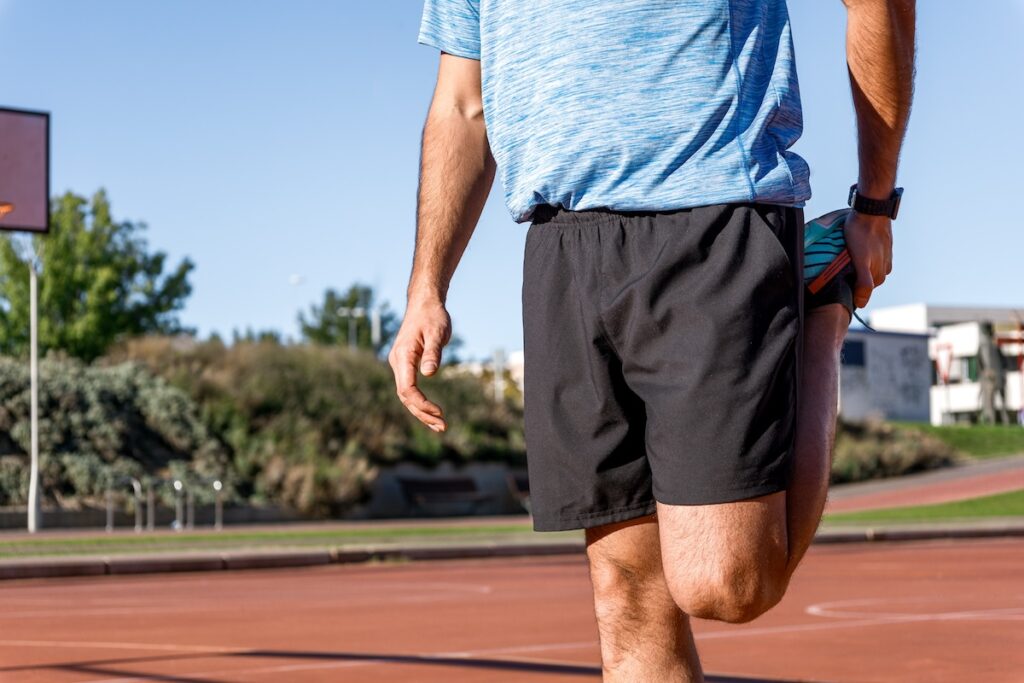
This stretch targets the quadriceps, which are heavily involved in exercises like broad jumps, lunges, and airborne lunges.
How to do it:
- Stand on one leg, grab the opposite foot with your hand, and pull it towards your buttock.
- Keep your knees together and push your hip forward to enhance the stretch.
- Hold onto something stable if you need help balancing.
- Hold the stretch for at least 2 minutes on each leg.
Piriformis Stretch
This stretch is excellent for cooling down the glutes and hips, and it is engaged during exercises like the Stop & Pop and side plank rotations.
How to do it:
- Sit on the floor with both legs extended in front of you.
- Cross one leg over the other so your foot is beside your thigh.
- Hug your knee with the opposite arm or twist your torso toward the lifted knee for a deeper stretch.
- Hold for at least two minutes, and then switch sides.
These stretches will help reduce the tension in the muscles used during the workout, promoting flexibility and decreasing the risk of injury.
After high-intensity workouts like this, gentle dynamic stretching or walking can also help gradually bring your heart rate down and reduce muscle stiffness and soreness.
Final Thoughts: No Equipment Workout for Cricketers
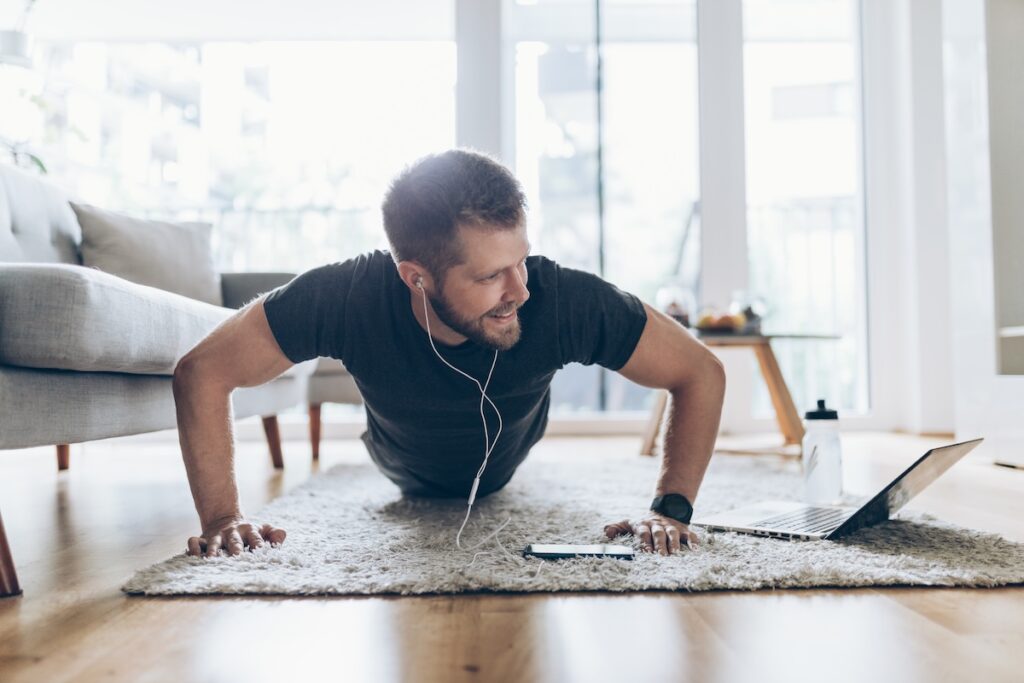
This no-equipment workout for cricketers uses only bodyweight exercises to help build athletic qualities for cricket.
By emphasizing core stability, balance, and functional strength, this programme hones the vital attributes of cricket—agility, coordination, and endurance—without needing any equipment.
This workout strengthens muscle groups essential for cricket through progressive movements targeting the whole body.
It will help you perform better on the field whilst helping with potential injury prevention.
The inclusion of cool-down stretches ensures muscle recovery and flexibility, keeping you primed and pain-free for your next net session or match.
Regular workouts like this will significantly enhance your physical fitness, on-field agility, and overall cricketing performance.
Which means scoring more runs and taking more wickets.
Remember, to get better requires commitment and persistence.
Stay dedicated to this workout to unlock your full potential on the cricket field.
If you need further assistance or a personalized approach to your training, don’t hesitate to schedule a strategy call with our team.
Further Reading
FAQs
What Are the Benefits of a No-Equipment Workout for Cricketers?
No-equipment workouts are particularly advantageous for cricketers due to their accessibility and the comprehensive fitness they promote. These workouts can be done anywhere, from a hotel room to a park or even a tiny living space, making them ideal for athletes who may not always have access to a gym.
Key benefits include flexibility, strength, and endurance improvements—each critical for cricket. Bodyweight exercises enhance core stability, a vital factor for maintaining balance and power during batting and bowling. Additionally, such workouts often involve plyometric movements, which help increase speed and explosive power and are essential for quick sprints and agile fielding.
The adaptability of no-equipment routines also means they can be modified to suit various fitness levels, ensuring that cricketers can continue challenging themselves as they progress.
How Often Should Cricketers Perform No-Equipment Workouts?
For optimal results, cricketers should integrate no-equipment workouts into their training programme 2-3 times weekly. This frequency allows for sufficient recovery between sessions while maintaining a consistent routine that supports cardiovascular health, muscle growth, and agility improvement.
Each session should ideally last between 30 and 45 minutes and incorporate cardiovascular exercises, strength training, and flexibility work. It’s also important to align these workouts with the cricket season; during the off-season, the focus may shift towards building strength and endurance, while in-season sessions might prioritize maintenance and flexibility to reduce injury risk.
Regularly varying the exercises’ intensity can help prevent plateaus and ensure continuous performance improvement.
Can No-Equipment Exercises Improve Batting and Bowling Performance?
No-equipment exercises can significantly enhance cricket batting and bowling performance. However, gym workouts still provide the best results.
Exercises like bodyweight squats, lunges, and planks strengthen the legs and core, providing a more stable base for hitting and bowling.
This increased stability can lead to more powerful striking for batsmen, and core strength is crucial for bowlers as it can lead to better control and the ability to bowl longer without fatigue.
Additionally, upper body exercises such as push-ups and dips improve arm strength, which is beneficial for faster, more forceful bowling and more resilient batting against fast bowlers.
Incorporating dynamic movements like high knees or burpees can also improve a player’s agility and reaction time, making them better equipped to respond quickly in game situations, whether hitting, running or fielding.

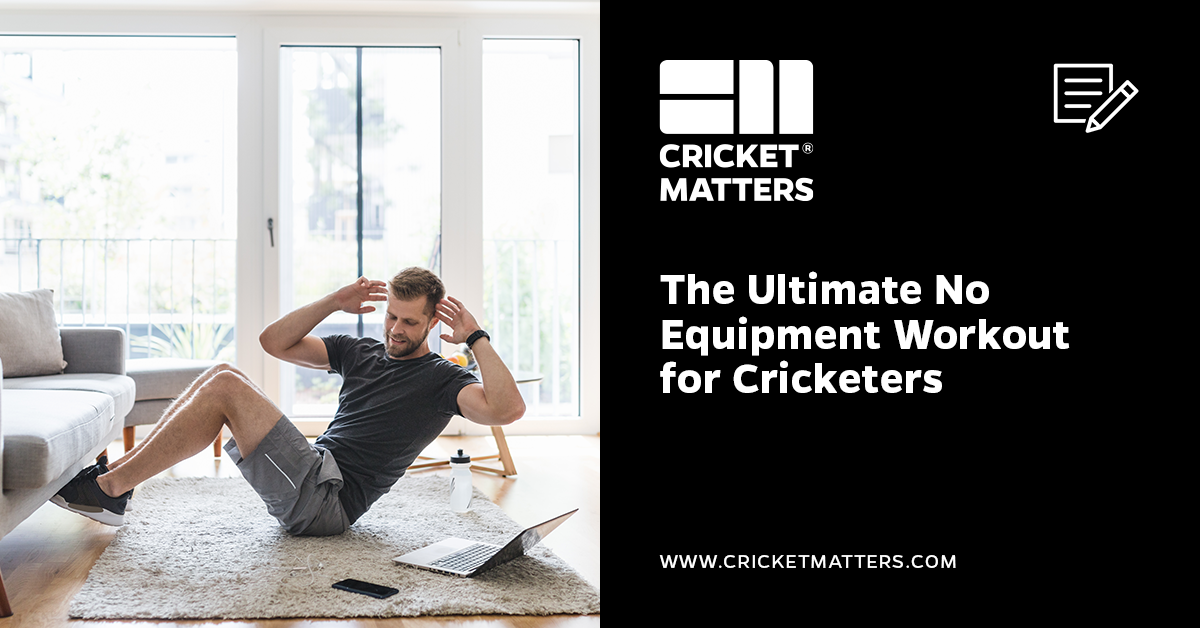
![[Case Study] Advanced Hiit Training Plan for Cricketers 4 Hiit Training for Cricketers](https://www.cricketmatters.com/wp-content/uploads/2024/04/HIIT_Training-1024x536.png)
